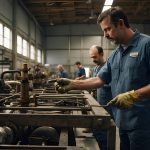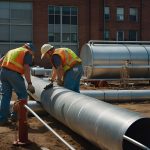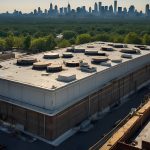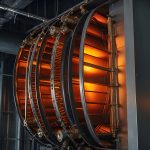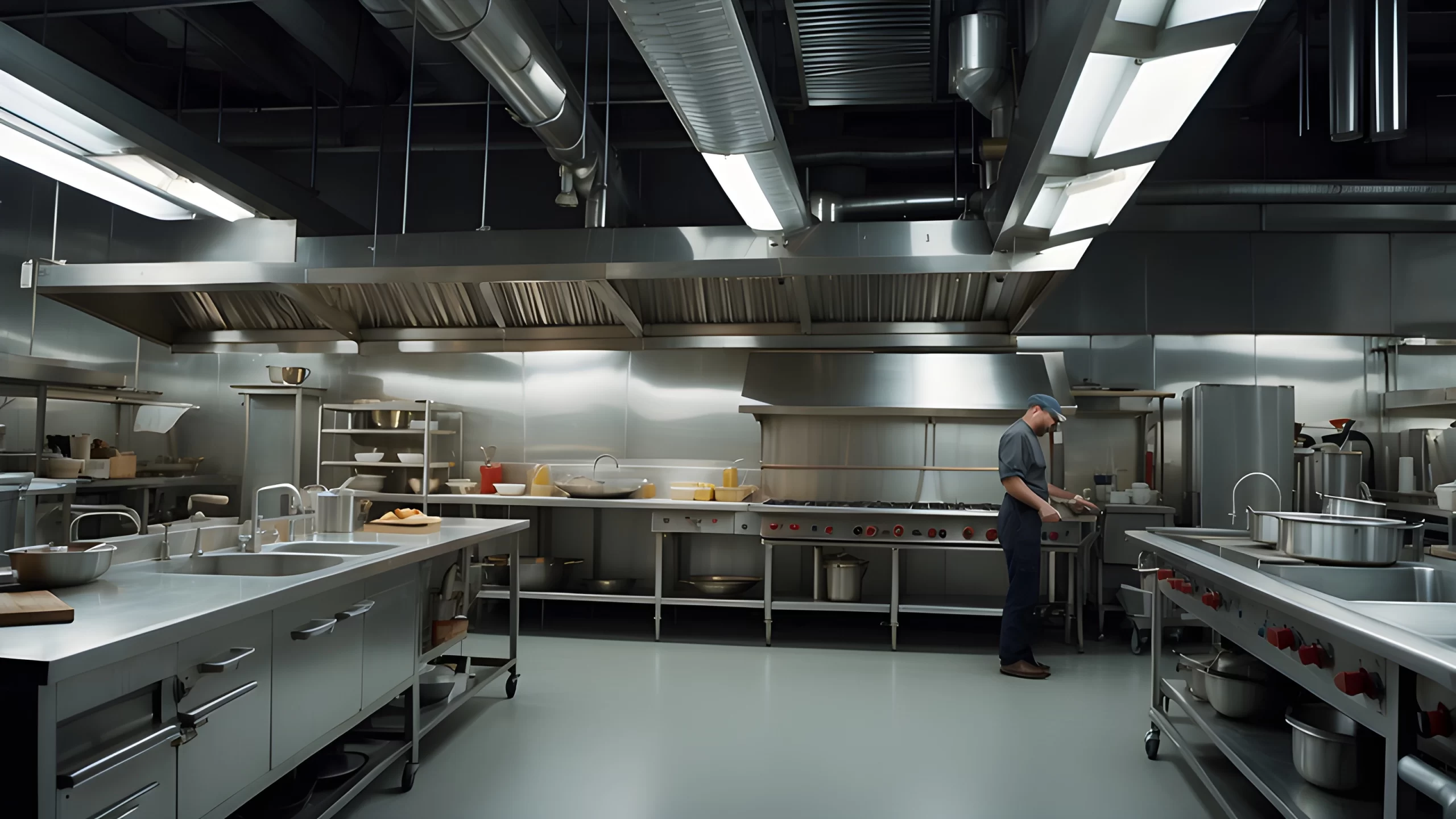
When you’re dealing with commercial kitchen installations, grease exhaust systems aren’t just another line item on your project list—they’re a critical safety component that can make or break your reputation. I’ve been fabricating custom grease exhaust ductwork for contractors across New Jersey, New York, and Pennsylvania for nearly a decade, and I’ve seen firsthand how the right fabrication partner can save your project from costly delays and code violations.
Understanding Grease Exhaust System Requirements
Grease exhaust systems demand specialized single-wall ductwork that meets stringent safety standards. Unlike standard HVAC applications, these systems handle high temperatures and grease-laden vapors that require specific materials and construction techniques. At HVAC Metals LLC, we’ve completed over 300 commercial kitchen projects since 2015, and each one has reinforced why precision matters in grease exhaust fabrication.
The key difference between standard ductwork and grease exhaust systems lies in the materials and construction methods. We use 16-gauge galvanized steel as our standard, though we frequently fabricate using heavier gauges when fire codes demand it. Furthermore, every joint must be welded—not just mechanically fastened—to prevent grease accumulation and ensure fire safety.
Critical Grease Exhaust Ductwork Specifications
Single-wall grease ductwork requires specific attention to detail that separates experienced fabricators from the rest. Here’s what I’ve learned matters most:
- Continuous welded seams: No mechanical fasteners allowed on grease-carrying surfaces
- Proper slope requirements: Minimum 1/4 inch per foot toward collection points
- Access panel placement: Strategic positioning for cleaning and maintenance
- Fire damper integration: Precise openings that meet manufacturer specifications
Last month, we fabricated a complete grease exhaust system for a 4,000 square foot restaurant in Newark. The project required 180 linear feet of custom ductwork with seven access panels and three fire damper installations. By delivering the entire system in pre-assembled sections, we reduced the contractor’s installation time by two full days.
Grease Exhaust Installation Challenges and Solutions
Every contractor I work with faces the same fundamental challenge: balancing speed with precision while meeting fire marshal requirements. Moreover, kitchen renovations often happen during tight timeframes when restaurants can’t afford extended closures. This is where our early morning delivery service becomes invaluable—we’ve delivered grease exhaust systems as early as 5:30 AM to accommodate weekend installation schedules.
Common Grease Exhaust System Pitfalls
Through years of collaboration with contractors, I’ve identified the most frequent issues that cause project delays:
- Improper slope calculations leading to grease pooling and code violations
- Inadequate access panel placement making cleaning difficult and expensive
- Incorrect fire damper rough openings requiring costly field modifications
- Poor coordination between hood manufacturer and ductwork fabricator
One particularly challenging project involved a pizzeria renovation in Hoboken where the original ductwork fabricator provided mechanically fastened joints instead of welded seams. Consequently, the fire marshal rejected the installation, and we had to fabricate replacement sections within 48 hours to keep the opening date. Our advanced fabrication capabilities allowed us to deliver welded, code-compliant ductwork that passed inspection immediately.
Quality Materials for Grease Exhaust Applications
Material selection significantly impacts both performance and longevity in grease exhaust systems. Standard galvanized steel works well for most applications, but high-volume kitchens often require stainless steel construction. Additionally, we stock both materials in multiple gauges, ensuring we can match your project specifications without delays.
Our family-owned facility in Kearny maintains inventory specifically for grease exhaust applications. This means when you call with an urgent kitchen project, we’re not scrambling to source materials—we’re cutting and welding within hours.
Grease Exhaust System Testing and Compliance
Before any grease exhaust system leaves our shop, it undergoes rigorous quality checks. We verify weld integrity, confirm slope requirements, and ensure all access panels seal properly. These steps prevent the callbacks that can damage your reputation and eat into project profits.
Recently, a mechanical contractor from Pennsylvania brought us blueprints for a hotel kitchen renovation with an impossible timeline—the fire marshal inspection was scheduled just five days after approval. By leveraging our automated cutting systems and coordinating delivery directly to the job site, we delivered a complete grease exhaust system that passed inspection on the first try. The contractor has since become one of our most reliable partners, trusting us with his most challenging projects.
Why Partner with HVAC Metals for Grease Exhaust Projects
When deadlines matter and code compliance isn’t negotiable, having the right fabrication partner makes all the difference. Our specialized approach to custom ductwork means every grease exhaust system we fabricate meets both your specifications and local fire codes.
We understand that your reputation depends on delivering quality installations on time. That’s why we’ve invested in equipment and processes that eliminate the guesswork from grease exhaust fabrication. Whether you need a simple straight run or a complex system with multiple direction changes, we deliver precision-fabricated components that install correctly the first time.
If you’re planning a commercial kitchen project and need reliable grease exhaust fabrication, reach out to our team. We’ll review your specifications, provide accurate lead times, and deliver the quality ductwork that keeps your projects moving forward.
FAQs
What’s the difference between single-wall and double-wall grease exhaust ductwork?
Single-wall grease ductwork is used within kitchen hoods and immediately above them, while double-wall systems are required when ductwork passes through combustible construction or concealed spaces. Most commercial kitchen installations use single-wall ductwork for the majority of the system, switching to double-wall only where fire codes specifically require it.
How quickly can you fabricate custom grease exhaust ductwork?
Our standard lead time for grease exhaust systems is 3-5 business days, depending on complexity. However, we regularly accommodate rush orders and can often deliver within 24-48 hours for urgent projects. Our early morning delivery service ensures your crew can start installation as soon as they arrive on site.
Do you provide grease exhaust ductwork that meets local fire codes?
Absolutely. We fabricate all grease exhaust ductwork to comply with NFPA 96 standards and local fire codes throughout New Jersey, New York, and Pennsylvania. Every system includes proper slopes, welded seams, and strategically placed access panels that fire marshals expect to see during inspections.
Written by: Arthur
HVAC Metals, LLC
